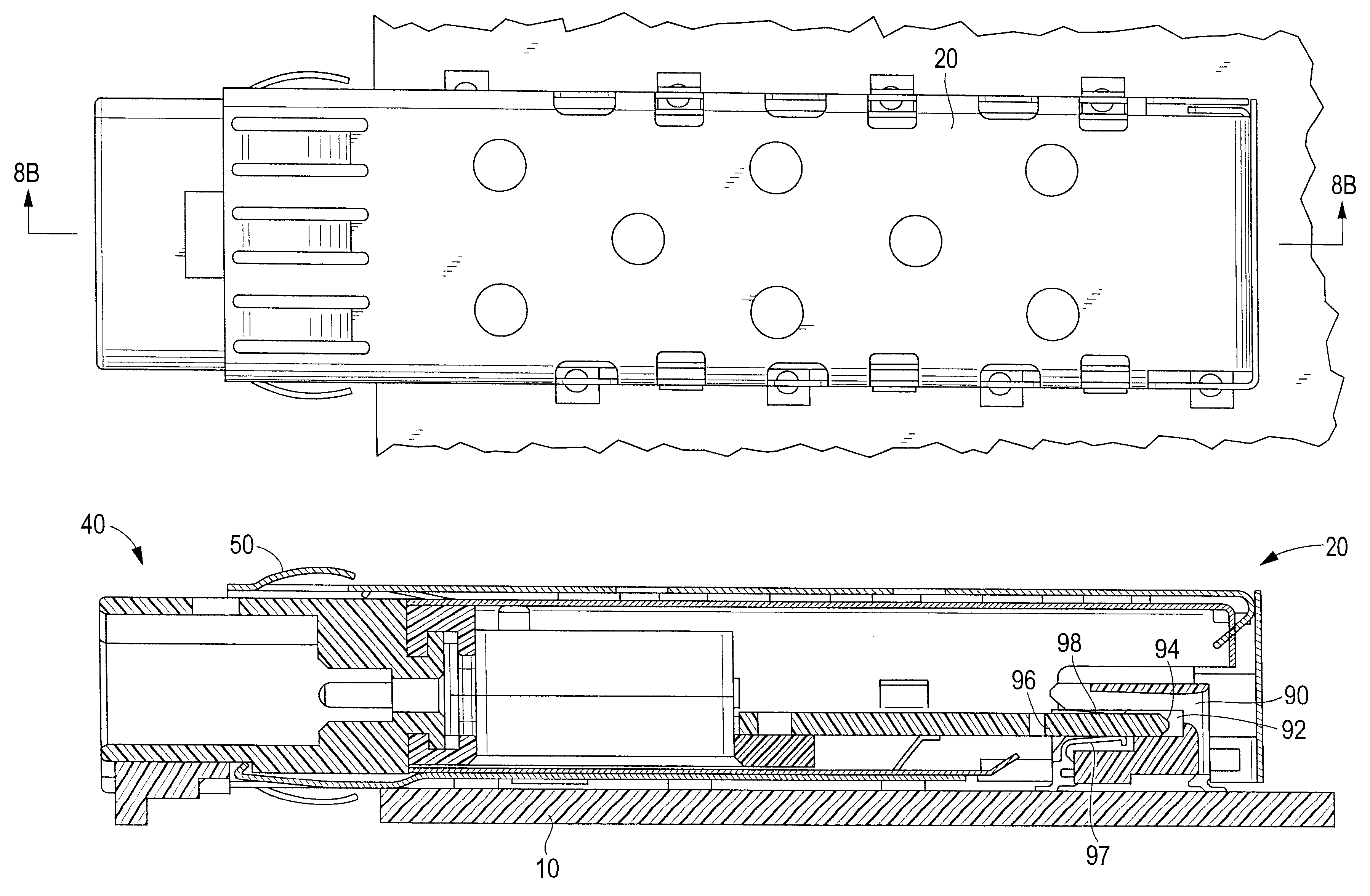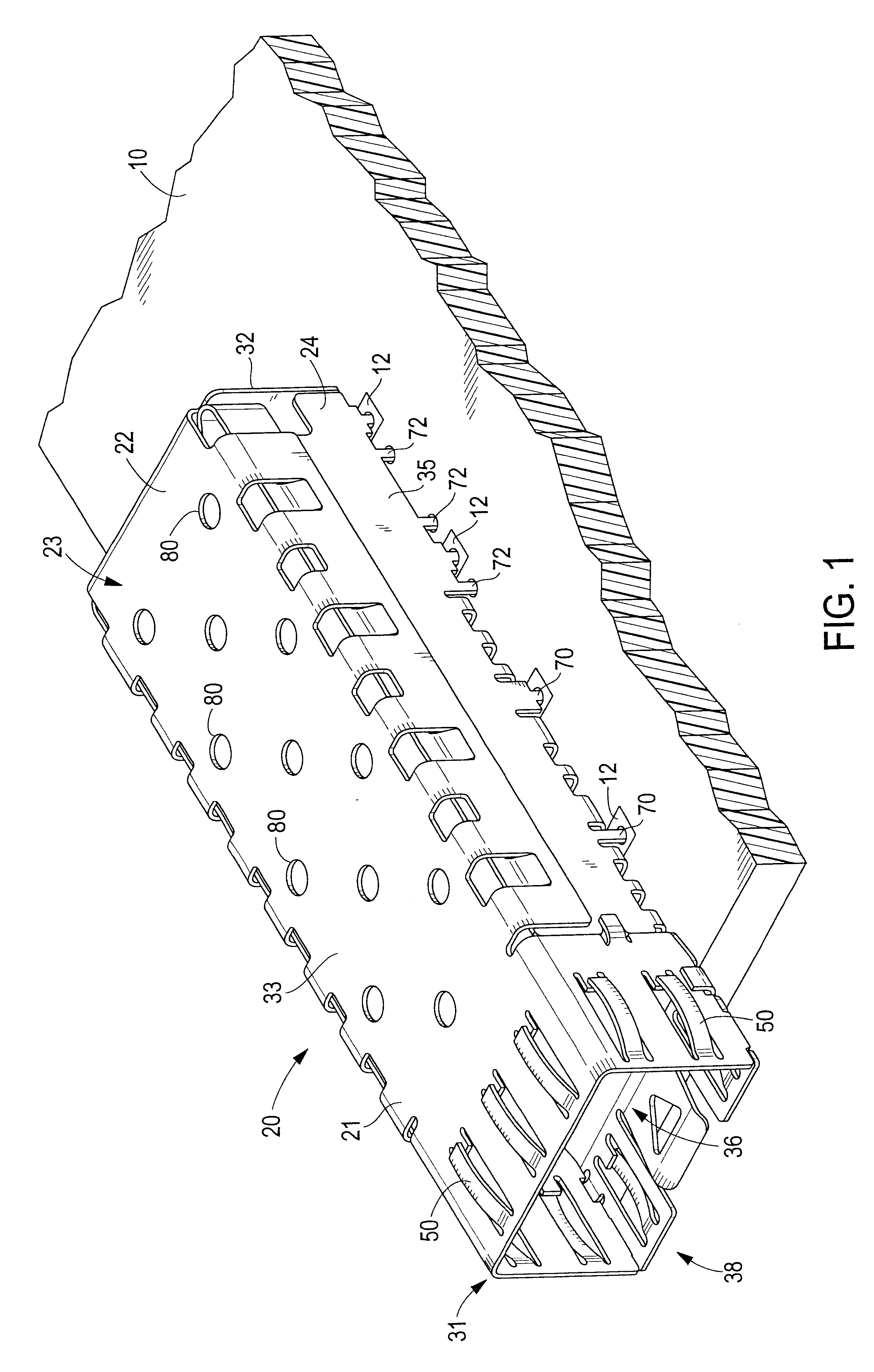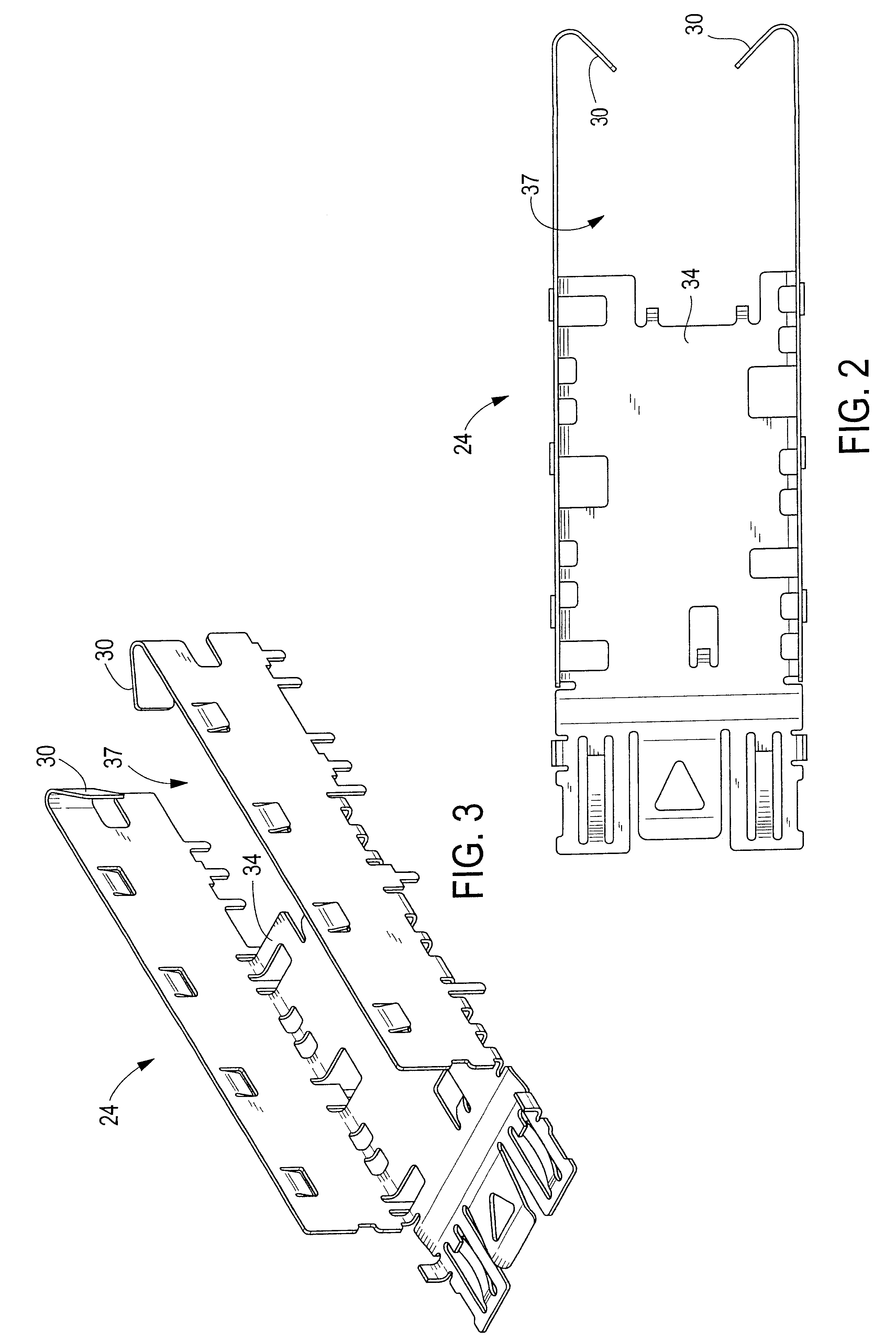Pluggable module and receptacle
a technology of receptacle and module, applied in the direction of coupling protective earth/shielding arrangement, coupling device connection, contact member penetrating/cutting insulation/cable strand, etc., can solve the problems of increasing the cost of the system comprising such modules, adding cost to the modules, and affecting the heat sensitive components within the modules. , to achieve the effect of effectively shielding emi emissions, eliminating leakage, and facilitating miniaturization and high operating frequency
- Summary
- Abstract
- Description
- Claims
- Application Information
AI Technical Summary
Benefits of technology
Problems solved by technology
Method used
Image
Examples
Embodiment Construction
The present invention provides a robust module and receptacle system which is suitable for miniaturization and which provides adequate EMI shielding and ventilation while facilitating easy connection / disconnection to a mating connector. As shown in FIG. 1, a receptacle 20 of the present invention is mounted to a host circuit board 10. The host circuit board is mounted in a host system such as a router or computer. The host system typically comprises a conductive chassis (not shown) having a bezel through which the receptacle is mounted such that the receptacle is electrically connected to the bezel. The host system typically has other components mounted to its circuit board which generate EMI that would escape through the bezel if not for the receptacle system of the present invention.
The module 40 of the present invention is shown in FIG. 9 and is configured to be inserted in the receptacle 20. In general, the module and receptacle system may be used in any application requiring an...
PUM
 Login to View More
Login to View More Abstract
Description
Claims
Application Information
 Login to View More
Login to View More - R&D
- Intellectual Property
- Life Sciences
- Materials
- Tech Scout
- Unparalleled Data Quality
- Higher Quality Content
- 60% Fewer Hallucinations
Browse by: Latest US Patents, China's latest patents, Technical Efficacy Thesaurus, Application Domain, Technology Topic, Popular Technical Reports.
© 2025 PatSnap. All rights reserved.Legal|Privacy policy|Modern Slavery Act Transparency Statement|Sitemap|About US| Contact US: help@patsnap.com



